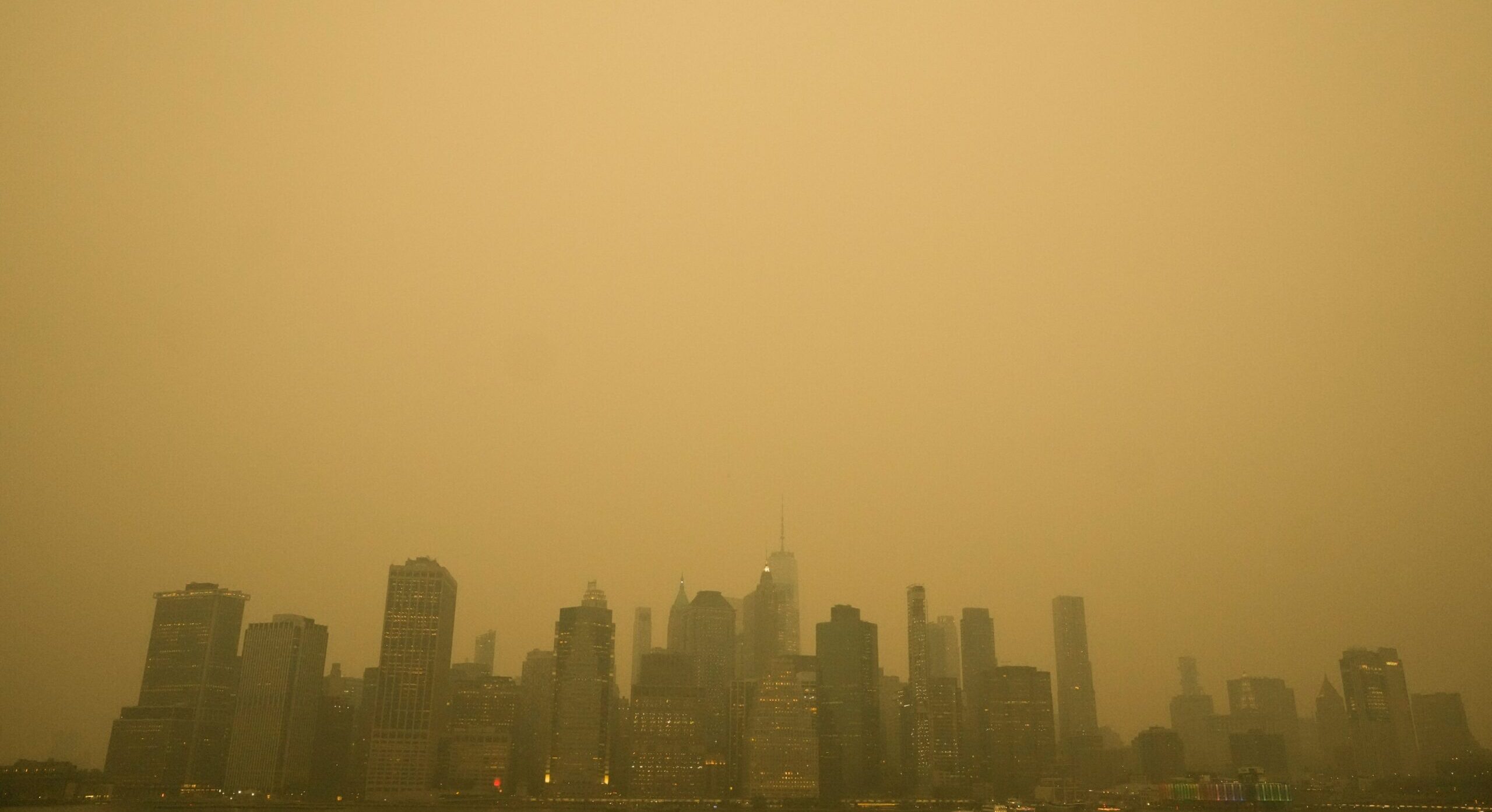What we’re watching: Weekly disaster update, June 12

We know all too well that disaster can strike anytime, anywhere in the world. Some disasters make headlines; others do not. Here at the Center for Disaster Philanthropy (CDP), we monitor the status of disasters worldwide and compile a list of the ones we’re tracking weekly, along with relevant disaster-related media coverage.
Here’s what we’re watching for the week of June 12, 2023.
New or Emerging Disasters
Haiti – Floods and Earthquake: On the heels of recent widespread flooding and landslides across the country, a 4.9 magnitude earthquake shook areas near Jeremie in southern Haiti on June 6. Authorities said the quake resulted in the deaths of at least four people and injured 36 others. According to Haiti’s Civil Protection Agency, two homes collapsed in the earthquake, and a critical route that connects Jeremie and Les Cayes was blocked.
Data from Haiti’s General Directorate of Civil Protection figures show the flooding in early June affected 39,458 households, killed 51 people and damaged or destroyed 2,445 homes. The flooding was especially devastating in communes that had received significant rainfall the week prior, such as Port-de-Paix in the country’s northwest.
Haiti is also experiencing a complex humanitarian emergency driven by a combination of factors, including political and socioeconomic crisis, rising inflation and cost of living, persistent poverty, and gang violence. According to the latest Integrated Food Security Phase Classification analysis, 4.9 million people, nearly half of the country’s population, are experiencing high levels of acute food insecurity. Disasters exacerbate underlying vulnerabilities and pre-existing inequities.
It is critical that funders and partners acknowledge and include local actors, civil society and the government in efforts to provide assistance and strengthen resilience. A recent paper by Sabina C. Robillard and Jessica Hsu describes why the localization agenda is so important in Haiti, summarizes the country’s localization situation and offers reforms that could move toward a more locally-led humanitarian response.
Previous/Ongoing Disasters
Canada – Wildfires: Canada’s worst-ever start to a wildfire season has burned more than 10.8 million acres (4.4 million hectares), resulting in significant local and regional impacts. As of June 8, there were 425 active fires across Canada, including 232 rated as “out of control,” according to the Canadian Interagency Forest Fire Centre (CIFFC). The CIFFC data show that Quebec had the most active fires of any province, with 142.
Yan Boulanger, a research scientist with Natural Resources Canada, said that the ground covered by the fires in Quebec’s commercial forests in recent days is huge and estimates that it’s equal to what was covered in the past 10 years combined. Fires across the country have left 20,000 people displaced.
The fires have prompted air quality warnings across Quebec. Canada’s wildfires also resulted in air quality alerts across the U.S. East Coast and Mid-Atlantic last week. The Metropolitan Washington Council of Governments issued a Code Purple air quality advisory for the first time ever. New York City recorded its worst air quality readings in decades, and Philadelphia public schools shifted to remote learning on June 9.
The U.S. has sent more than 600 firefighters and equipment to Canada, and crews from South Africa, Australia, New Zealand, France, Portugal and Spain are also arriving to help control the fires.
Wildfires are becoming more common due to climate change because it creates the right conditions for them, including dry fuel to burn, frequent lightning strikes that can start fires, and windy, dry, hot weather that fans the flames.
For more, see our 2023 North American Wildfires disaster profile.
Ukraine – Complex Humanitarian Emergency: Attacks on critical infrastructure put communities in despair, hamper recovery and destroy lives. The latest example of this is the collapse of the Kakhovka dam. Ukrainian and Russian authorities blamed each other for the collapse, which sent residents fleeing, prompted rescues, and damaged thousands of homes and civilian infrastructure. The dam’s destruction is being referred to by some as the largest technological disaster in Europe in decades.
According to experts, a deliberate explosion inside the dam most likely caused the massive structure to crumble. The dam has been under Russian control since early in the war. Officials say about 22,000 people live in areas at risk of flooding in Russian-controlled areas on the eastern side of the Dnieper River, while 16,000 live in the most critical zone in Ukrainian-held territory on the river’s western side.
In 2023, 17.6 million people in Ukraine require humanitarian assistance, 45% of whom are women, 23% are children and 15% are people with disabilities.
For more, see our Ukraine Humanitarian Crisis disaster profile.
In addition to the disasters listed above, we actively monitor the following disasters or humanitarian emergencies. For more information, see the relevant disaster profiles, which are updated regularly.
- Afghanistan Humanitarian Crisis
- Horn of Africa Hunger Crisis
- 2023 Turkey-Syria Earthquake
- 2023 US Tornadoes
U.S. Midwest Low-Attention Disasters
The Midwest is regularly faced with low-attention disasters that affect people across the region. CDP’s Midwest Early Recovery Fund (ERF) effectively funds efforts that catalyze equitable disaster recovery.
These are some of the latest disasters and related news the ERF team is monitoring:
- North Dakota Governor Doug Burgum has requested a presidential major disaster declaration for spring flooding that caused more than $5 million in damage to the state’s roads and other public infrastructure.
- U.S. Small Business Administration Administrator Isabella Casillas Guzman announced the Disaster Assistance for Rural Communities Act as in effect on June 6. The law will allow rural areas to declare a disaster “where significant damage has been incurred for the purpose of providing certain assistance.”
- Heavy rainfall last week in Billings, Montana, flooded several areas, caused street closures and flooded basements. Flash floods in Stillwater County damaged private bridges and led to a temporary road closure. No injuries were reported.
Complex Humanitarian Emergencies – Nigeria
Many places worldwide are experiencing emergencies caused by conflict, climate change, drought, famine, economic challenges and other conditions that combine to create a complex humanitarian emergency (CHE). CDP maintains complete profiles on several CHEs, and what CDP considers Level 1 CHEs are profiled in this weekly blog post and tracked.
President Bola Ahmed Tinubu has been sworn in as the 16th president of Nigeria, Africa’s most populous nation. President Tinubu faces the task of bringing stability to an economy burdened with record debt and inflation, a weakened naira currency, and declining oil production.
Nigeria’s National Bureau of Statistics estimates that 63% of the population, around 133 million people, are now classified as multidimensionally poor. President Tinubu announced in his inaugural speech that “the fuel subsidy is gone”. For decades cheap fuel has been a lifeline for Nigerians struggling economically.
On top of the macroeconomic situation, the simultaneous threat of conflict and extreme weather events is driving food insecurity, displacement and rising humanitarian needs. The Food and Agriculture Organization of the UN (FAO) says about 25.3 million people are projected to face acute food insecurity during the June to August 2023 lean season.
The FAO said acute food insecurity is “mostly driven by the deterioration of security conditions and conflicts in northern states,” and widespread flooding in 2022 has compounded the conditions. High food prices and economic slowdown are also factors.
Humanitarian organizations urgently require $396.1 million to scale up in Borno, Adamawa and Yobe states over the next six months “to prevent a widespread hunger and malnutrition crisis from turning catastrophic.”
Insecurity linked to armed groups, including the terrorist group Boko Haram, has disrupted livelihoods and displaced more than two million people. Nigeria’s insecurity also stems from communal conflict over resources and gang violence. In early June, gunmen killed at least 30 people and kidnapped children in separate attacks across three northern states.
Upcoming webinars

July 13: The gendered nature of climate change

Aug. 10: Disaster case management: Navigating recovery one person at a time
What We’re Reading
- El Niño is back, and is poised to turbocharge extreme weather – The Washington Post: According to scientists, El Niño has returned for the first time in four years and will likely push average global temperatures beyond a record set in 2016. NOAA predicts an 84% chance of at least a moderate strength El Niño and 56% of a strong El Niño.
- El Niño’s Officially Here. Can It Tame the Atlantic? – Eye on the Tropics: Hurricane specialist Michael Lowry describes how El Niño is typically associated with reduced Atlantic hurricane activity, but other factors in 2023 make the forecast less clear. Lowry added, “For now, we expect the Atlantic to remain quiet for near future, with no tropical development expected at least into the middle part of next week.”
- State Farm’s California Pullout: What It Means for Climate Adaptation and Communities – Columbia Climate School: Climate school experts weigh in on questions such as, do decisions like State Farm’s aid in climate adaptation and moving people out of harm’s way? And what do decisions like this mean for vulnerable communities?
- Climate lens tool for Australian philanthropists will help funders minimise climate effects – Alliance: Philanthropy Australia and the Australian Environmental Grantmakers Network have partnered to launch the Climate Lens tool, which will highlight “how a nuanced approach to supporting social impact can help philanthropists minimise the effects of climate change.”
More than 200 South African firefighters landed at Edmonton International Airport to assist with wildfire fighting efforts in the province. Upon arrival, they performed a song and dance.
